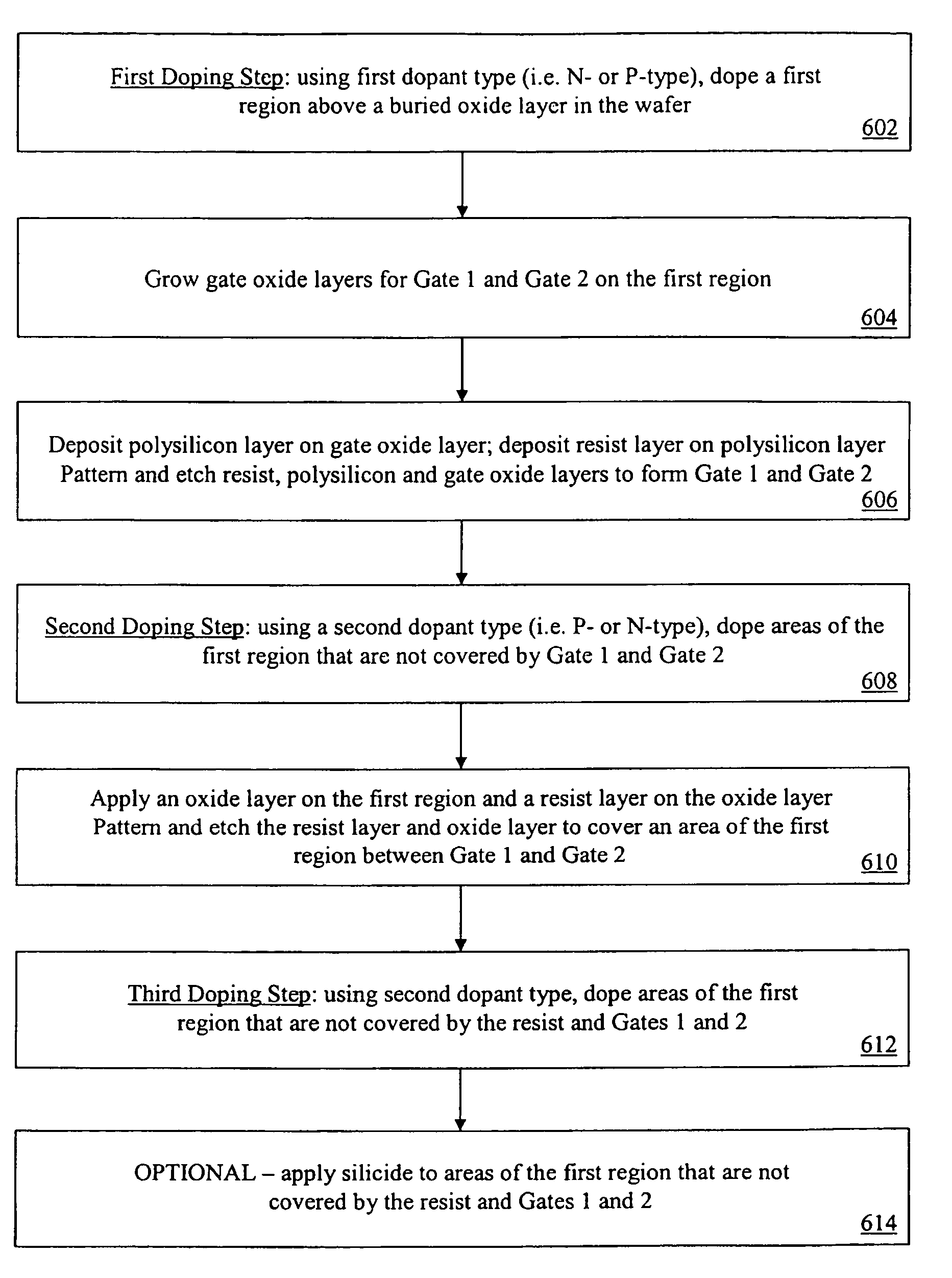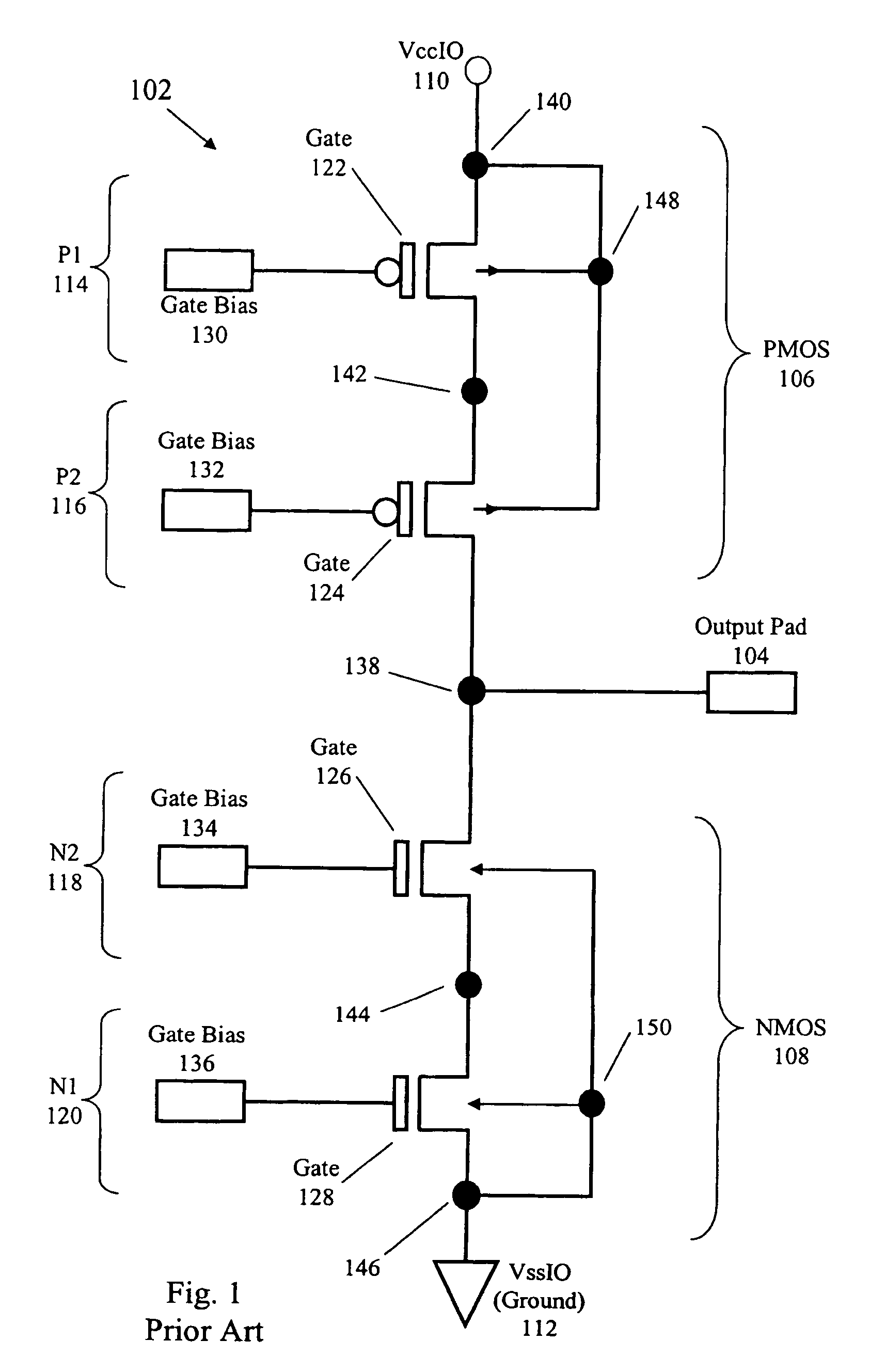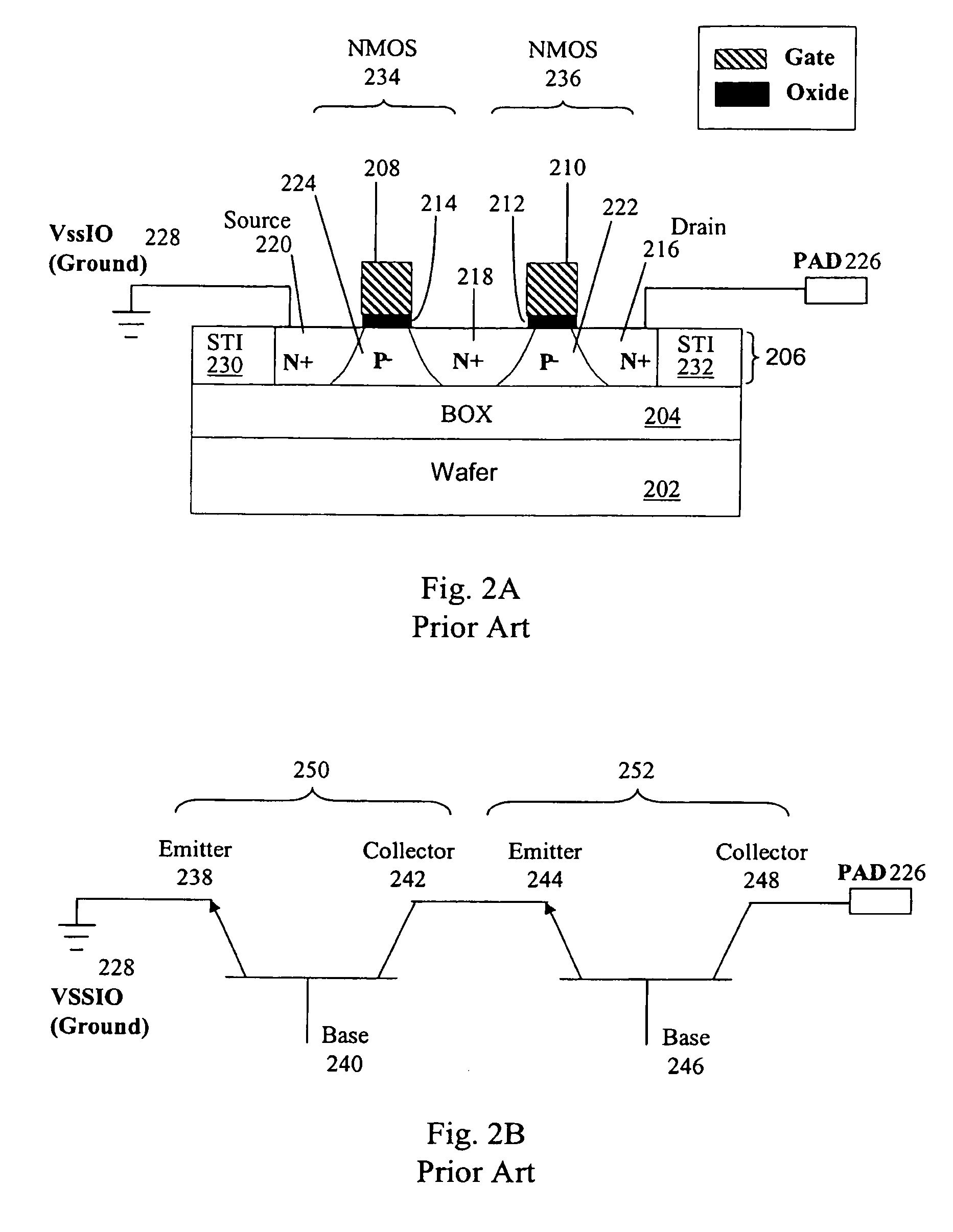Method for implementing electro-static discharge protection in silicon-on-insulator devices
a technology of electrostatic discharge and silicon-on-insulator, which is applied in the direction of semiconductor devices, semiconductor/solid-state device details, electrical equipment, etc., can solve the problems of large electrostatic potential to be discharged across a device, failure of electronic devices and components, and devices formed on soi wafers that are just as susceptible to esd events as bulk silicon devices, etc., to achieve better esd protection
- Summary
- Abstract
- Description
- Claims
- Application Information
AI Technical Summary
Benefits of technology
Problems solved by technology
Method used
Image
Examples
Embodiment Construction
[0021]Embodiments of the present invention utilize the parasitic bipolar transistors in MOS devices to provide ESD protection to two or more such devices coupled together in series, such as in a stacked gate configuration. As illustrated in FIGS. 2A and 2B, typical prior art stacked gate devices formed on SOI have diffusion regions that extend down to the buried oxide layer, splitting the P− well region into two separate P− regions (222, 224). Thus, two such adjacent MOS devices do not share a common body. As illustrated in FIG. 2A, for example, first and second NMOS transistors 234, 236 in a stacked gate configuration are formed on a wafer 202 (e.g., a silicon wafer) with a buried oxide (BOX) layer 204. The NMOS transistors are formed in the silicon layer 206 above the BOX layer 204, and are isolated from other regions on the wafer by shallow trench isolation (STI) regions 230, 232. NMOS transistor 234 includes a N+ doped source region 220, a P− doped body region 224, an N+ doped d...
PUM
 Login to View More
Login to View More Abstract
Description
Claims
Application Information
 Login to View More
Login to View More - R&D
- Intellectual Property
- Life Sciences
- Materials
- Tech Scout
- Unparalleled Data Quality
- Higher Quality Content
- 60% Fewer Hallucinations
Browse by: Latest US Patents, China's latest patents, Technical Efficacy Thesaurus, Application Domain, Technology Topic, Popular Technical Reports.
© 2025 PatSnap. All rights reserved.Legal|Privacy policy|Modern Slavery Act Transparency Statement|Sitemap|About US| Contact US: help@patsnap.com



